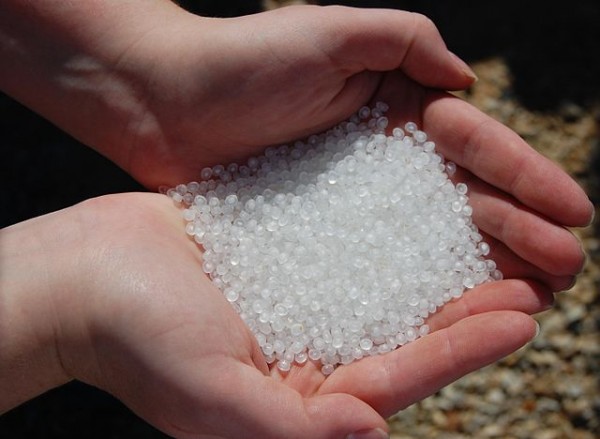
The 73 percent contamination rate is one of the highest levels in the world. The unique feeding behavior of mesopelagic fish means they could drag surface microplastics down to the deeper levels of the marine ecosystem.
Furthermore, mesopelagic fish are preyed upon by other fish that are in turn caught and consumed by humans. Given the longevity of microplastics, their associated toxins will contaminate our food supply.
"The high ingestion rate of microplastics by mesopelagic fish that we observed has important consequences for the health of marine ecosystems and biogeochemical cycling in general," said Alina Wieczorek, a researcher from the National University of Ireland, Galway (NUIG.)
As their name denotes, microplastics are tiny fragments of plastic pollutants that have accrued in the ocean over the decades. If ingested by marine organisms, they can cause inflammation, loss of weight, and prevent proper feeding.
Their negative effects are not just limited to the animal that ate them. Microplastics can combine with chemical pollutants in the water. When a contaminated prey animal is eaten by a predator, the toxins will build up in the latter's bodies.
The latter indirect method of contamination applies to mesopelagic fish, which are eaten by dolphins, sea birds, seals, swordfish, tuna, and other animals.
Mesopelagic fish bring surface pollution to deeper ocean
Mesopelagic fish normally stay anywhere from 650 to 3,2000 feet (200 to 1,000 meters) below the surface of the sea. When night falls, they head to the surface to feed before returning to deeper waters as the sun rises.
Their daily vertical movements give them a big role in biogeochemical cycling, the movement of chemicals from the life-rich biotic surface to the abiotic parts deeper down. Normally these chemicals are carbon and other nutrients.
But given they also consume microplastics, mesopelagic fish end up contaminating the deep-sea organisms that prey on them or their remains. (Related: The ocean’s filter feeders threatened by microplastics: Whales, sharks and rays are dying from obstructions, toxins.)
Wieczorek and her research team expanded on the information regarding the effect of microplastics on mesopelagic fish. They chose a whirlpool near the coast of Newfoundland due to its remote location.
"These fish inhabit a remote area, so theoretically they should be pretty isolated from human influences, such as microplastics. However, as they regularly migrate to the surface, we thought that they may ingest microplastics there," reported Wieczorek.
Mesopelagic fish were caught at varying depths and taken back to the lab for study. A special air filter was used to keep airborne plastic fibers out of the laboratory environment.
Properly screened from external contaminants, Wieczorek and company opened the specimens' stomachs. They encountered microplastic fibers and other plastic pollutants in 73 percent of their catch.
"We recorded one of the highest frequencies of microplastics among fish species globally," Wieczorek stated in the report. "In particular, we found high levels of plastic fibers such as those used in textiles."
The high levels of microplastic fibers are of great concern. Previous studies had detected their presence, but researchers considered them lab contamination.
Wieczorek's team intended to uncover more about how microplastics are ingested and distributed by mesopelagic fish.
"It will be particularly interesting to see whether the fish ingest these microplastics directly as mistaken prey items, or whether they ingest them through eating prey species, which have previously ingested the microplastics," Wieczorek said.
Learn more about microplastics at Pollution.News.
Sources include:
Please contact us for more information.























